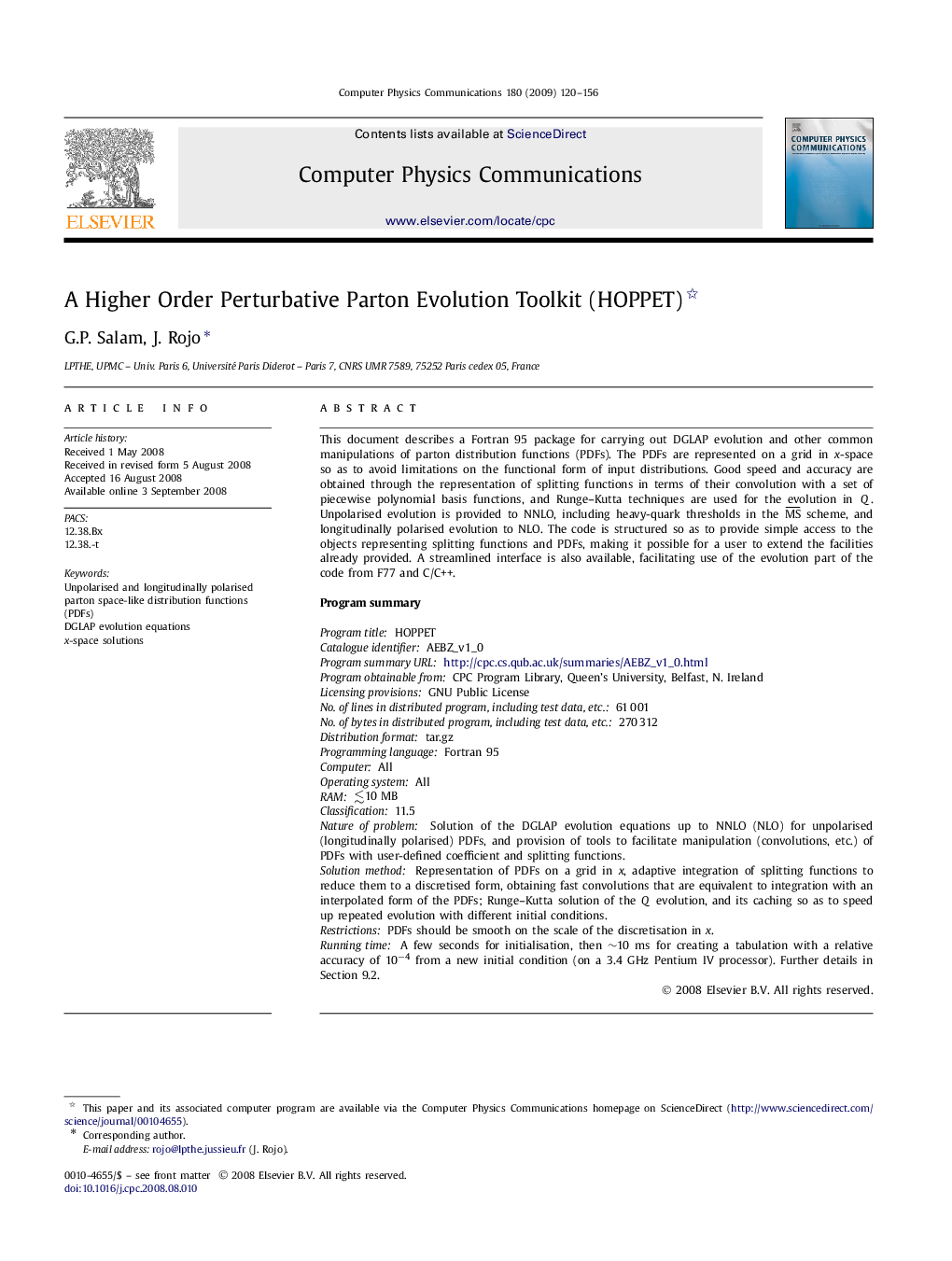| کد مقاله | کد نشریه | سال انتشار | مقاله انگلیسی | نسخه تمام متن |
|---|---|---|---|---|
| 503794 | 863815 | 2009 | 37 صفحه PDF | دانلود رایگان |

This document describes a Fortran 95 package for carrying out DGLAP evolution and other common manipulations of parton distribution functions (PDFs). The PDFs are represented on a grid in x-space so as to avoid limitations on the functional form of input distributions. Good speed and accuracy are obtained through the representation of splitting functions in terms of their convolution with a set of piecewise polynomial basis functions, and Runge–Kutta techniques are used for the evolution in Q . Unpolarised evolution is provided to NNLO, including heavy-quark thresholds in the MS¯ scheme, and longitudinally polarised evolution to NLO. The code is structured so as to provide simple access to the objects representing splitting functions and PDFs, making it possible for a user to extend the facilities already provided. A streamlined interface is also available, facilitating use of the evolution part of the code from F77 and C/C++.Program summaryProgram title: HOPPETCatalogue identifier: AEBZ_v1_0Program summary URL:http://cpc.cs.qub.ac.uk/summaries/AEBZ_v1_0.htmlProgram obtainable from: CPC Program Library, Queen's University, Belfast, N. IrelandLicensing provisions: GNU Public LicenseNo. of lines in distributed program, including test data, etc.: 61 001No. of bytes in distributed program, including test data, etc.: 270 312Distribution format: tar.gzProgramming language: Fortran 95Computer: AllOperating system: AllRAM: ≲10 MBClassification: 11.5Nature of problem: Solution of the DGLAP evolution equations up to NNLO (NLO) for unpolarised (longitudinally polarised) PDFs, and provision of tools to facilitate manipulation (convolutions, etc.) of PDFs with user-defined coefficient and splitting functions.Solution method: Representation of PDFs on a grid in x, adaptive integration of splitting functions to reduce them to a discretised form, obtaining fast convolutions that are equivalent to integration with an interpolated form of the PDFs; Runge–Kutta solution of the Q evolution, and its caching so as to speed up repeated evolution with different initial conditions.Restrictions: PDFs should be smooth on the scale of the discretisation in x.Running time: A few seconds for initialisation, then ∼10 ms for creating a tabulation with a relative accuracy of 10−4 from a new initial condition (on a 3.4 GHz Pentium IV processor). Further details in Section 9.2.
Journal: Computer Physics Communications - Volume 180, Issue 1, January 2009, Pages 120–156